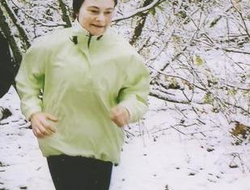Physical activity, exercise, and the environment (part 2)
Published: September 14, 2018
Physical activity and weather
Heat, cold, rain, hail and snow have the potential to directly adversely affect your health.
While inclement weather conditions may promote inactivity, people who continue to participate in physical activity in various weather conditions may need to consider the following.
High environmental temperatures
Whether you are in an outdoor or indoor environment high air temperature can cause a variety of heat related issues which are potentially life threatening and primarily associated with heat stress.
In most situations heat stress and its consequences can be avoided. However, heat stress syndrome, heat exhaustion and heat stroke occur.
Heat stress
This occurs when your body cannot cope with the heat it produces.
Heat is produced by your body through cellular metabolism, the activity of your muscles, ingestion, digestion and absorption of food, hormonal activity and heat from the environment such as air temperature, the sun’s direct rays, and rays reflected from snow and sand.
Under normal conditions your body will maintain your core body temperature by various mechanisms which involve your circulatory system, sweating, endocrine and neuro-impulse responses.
This process is known as thermoregulation and the most obvious form of thermal regulation is sweating.
Your body can usually cope with loss of water through sweating up to 3% of body weight.
This would be identified by weight loss of approximately 2 kg for a 67 kg person (4.5 lbs for a 150lb person) over a relatively short period of time (1-2 hours).
Should you not replace your fluids your body will reduce the amount of sweat you produce.
This results in heat stress...link to the full article to learn more.
References
1.
American Council on Exercise (1996). Personal Trainer Manual. San Diego, CA: American Council on Exercise
2.
American Council on Exercise (1993) Aerobics Instructor Manual: San Diego, CA: American Council on Exercise

